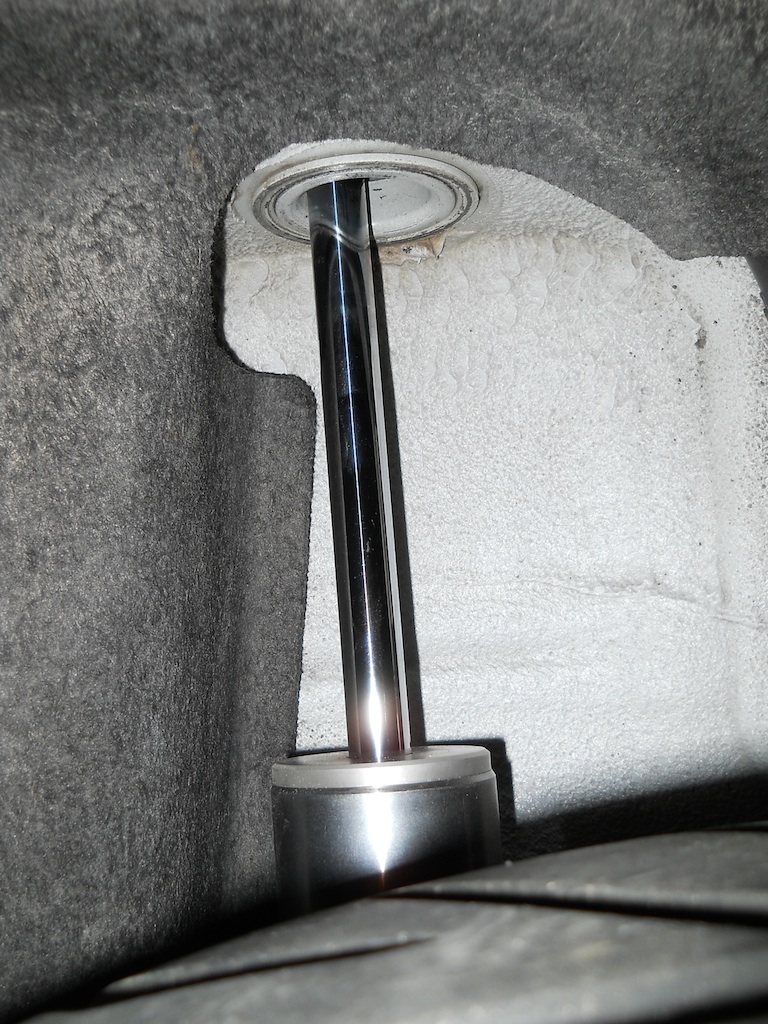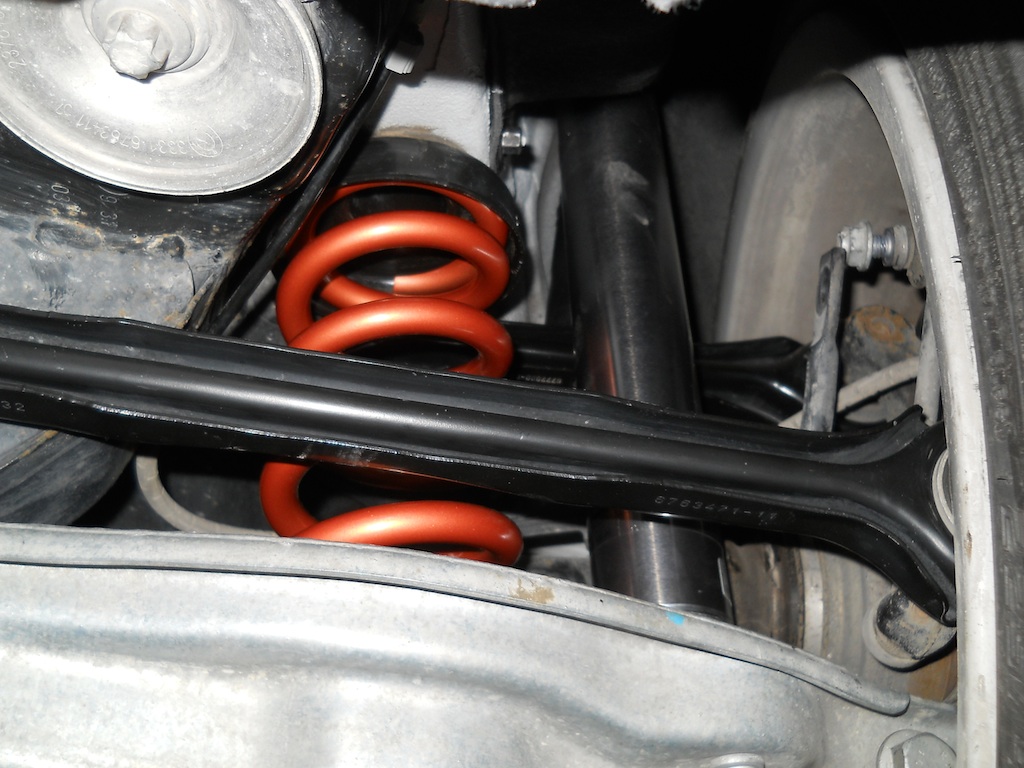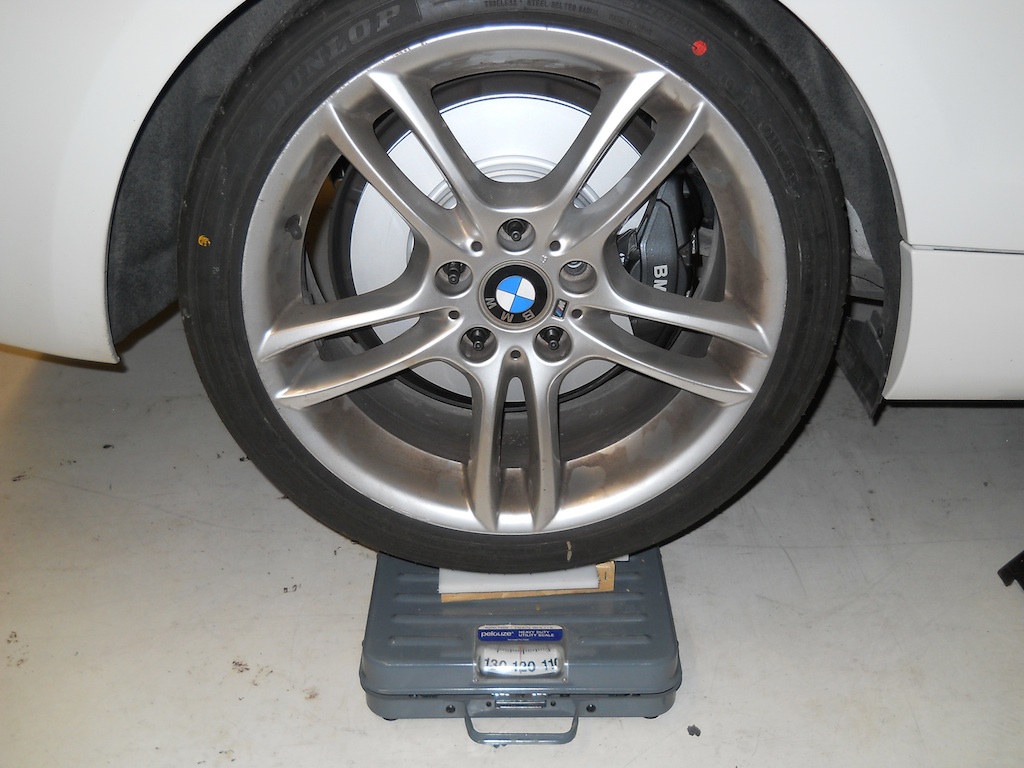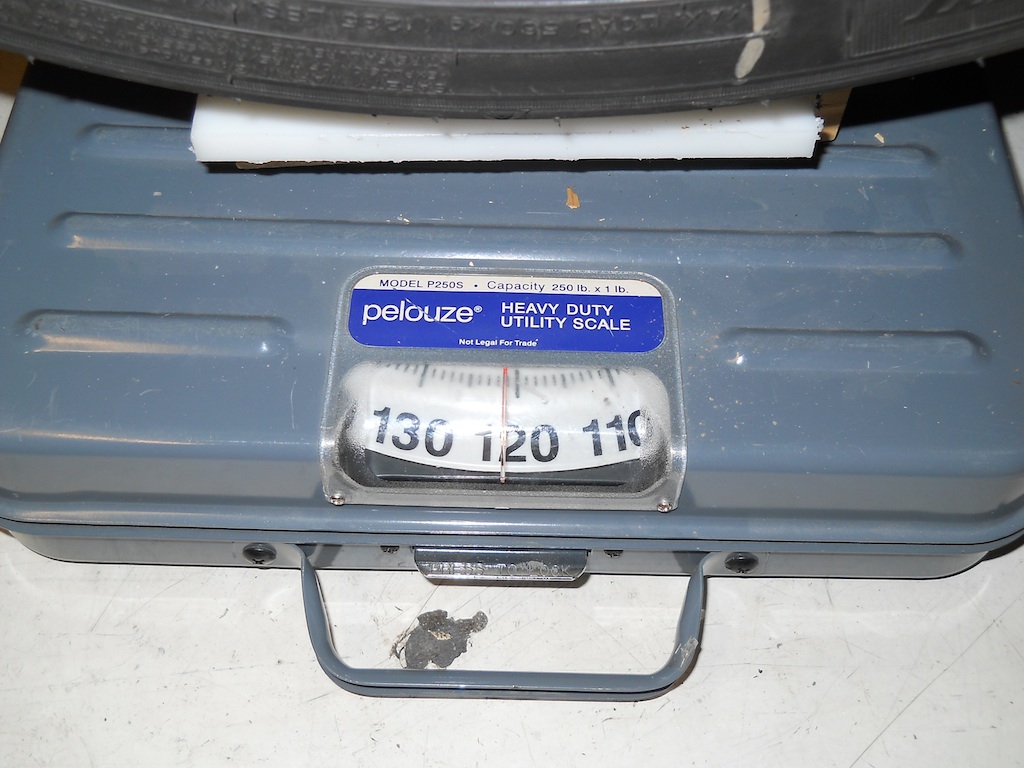Today’s installment is small and answers the question “what is the rear unsprung weight?”
In the quest for making it work knowing the unsprung weight accurately isn’t strictly necessary, but to understand why it works it is an essential piece of data.
One way to visualize what unsprung weight is is to ask the question “if this item were made heavier, making the car heavier in the process, would it result in any more load being carried by the suspension spring?” If the answer is “no”, then the item is unsprung weight.
The following items are unsprung weight. Because these items are located very close to the wheel centre, 100% of their weight acts vertically down through the tire. Where I have weighed the item and know its weight, I have provided it.
brake caliper
brake pads (1.7 lbs)
rotor (17.5 lbs)
wheel (26 lbs) OE Style 261
tire (26 lbs) Direzza ZII 225/40R18
hub
end link
Other items add to the unsprung weight, but they are also supported in part by the inboard suspension points. A strict calculation of their impact on the unsprung weight would require knowing their weight and centre of gravity location, and drawing a free body diagram for each, relative to the tire contact patch. It isn’t particularly easy or convenient to obtain the weights and installed geometries of each of these items.
Ohlins damper (4.5 lbs)
Swift spring (4 lbs) Z65-228-120 (9" x 684 lb/in)
Half-shaft
Camber Arm (6.5 lbs)
Upper Arm (2.4 lbs)
Guide Arm (2.4 lbs)
Trailing Arm
Toe Link (2.2 lbs)
The spring is a particularly interesting case. The load on the spring is actually different top and bottom because of the spring’s self weight. One could argue that the spring force should be measured in the middle of the spring and thus that only half its weight contributes to unsprung weight.
Rather that do all the required disassembly, weighing, drawing and calculating, it is much easier to measure the unsprung weight directly. It is necessary to disconnect all the springs in the system first. The suspension spring is not the only one! Obviously the suspension spring height adjuster needs to be removed so that the spring sits loose. Also the end link needs to be disconnected from the anti-roll bar (torsion spring). The shock (gas spring) needs to sit in place with no mounts up top to impart any compression to it. Finally, all the suspension link bolts need to be loosened so that the bushings (torsion springs) have no torsional preload in them.
Unsprung weight can then be measured directly by supporting the chassis on jack stands and weighing the freely hanging suspension at the wheel, at the normal ride height relative to the chassis.
Shock is free:

Spring and end link and suspension bolts are loose:

Ride height is checked:

Unsprung weight is measured directly after the scale is zeroed with the blocking in place:


Splitting hairs and based on the location of the spring, about half its 4 lb weight appears at the scale and only half that actually constitutes unsprung weight. Therefore we can subtract 1 lb from the scale reading, giving a rear unsprung weight of 120 lbs.
Future changes to brakes, wheels or tires can easily be accounted for because these are 100% items and the associated weight change will directly affect the unsprung weight.